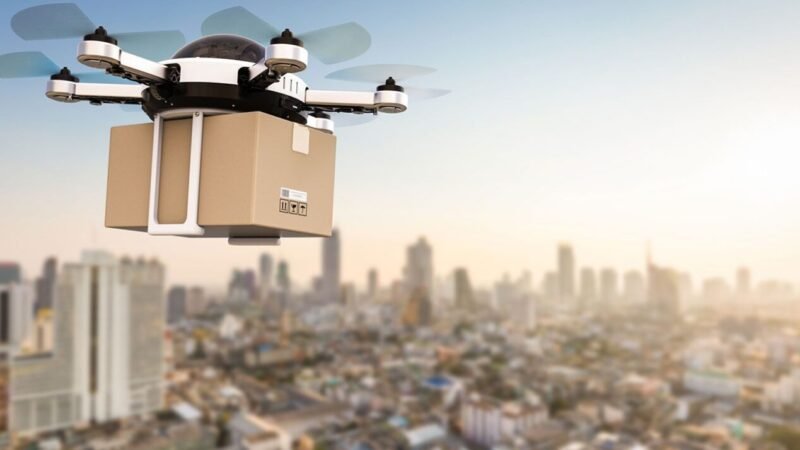With the increasing investment in technology resources and the changing consumer landscape, it is time to re-evaluate supply chain management practices. Small businesses have begun to explore innovations to improve efficiency and keep up with consumer demands. The goal is to make business operations more effective, and the technology is now becoming a viable option for small businesses in a number of countries.
We’ll cover more about fresh perspectives in this post, as well as five examples of supply chain innovation that can help companies stay on track.
Contents
Predictive Analytics and Supply Chain Management
Companies have spent decades focusing on cutting expenses and reducing inventories. Because manufacturing outages were rare, supply chain flexibility took a backseat. As a result, the crisis of the previous two years caught many people by surprise.
Companies must now restructure their supply chains. To do so, companies should consider IoT development services that could have a positive impact on their business. This is where smart supply chain IoT solutions like digital twins come in handy.
Digital twins are virtual representations of real objects and processes.
Changes in the supply chain can be simulated using digital twins. They:
- At every step of a supply chain, control product flows, transportation volumes, and expenses.
- Collect data from various systems.
- Eliminate data discrepancies.
- Use a responsive map to create what-if possibilities. The model describes how external events or changes in the supply chain network can impact the entire chain.
They can mimic the chaos of global supply chains, such as transit and supplier issues. The device can also forecast the impact of a disruptive incident on the supply chain and recommend solutions to reduce the damage. As a consequence, a company will be better prepared for future shortages and will be able to save costs by optimizing its supply chain network.
ML and inventory optimization
Retailers are constantly in danger of running out of hot items and overstocking those that sell less. In this situation, a store will continue to lose sales of fashion items, resulting in revenue being locked into unsold inventory. Today’s perils make deciding whether to save money on expensive storage or buy and keep more products even more challenging.
Current technology helps in the following ways:
- Maintain inventory records
- Determine optimal stock levels.
- Stock up on supplies ahead of time.
- Take external risks into account
Flieber, for example, uses advanced data analytics and machine learning to estimate sales and identify an appropriate inventory level for e-commerce businesses. The technology also alerts retailers when it’s time to restock so new products arrive before they run out.
Smart routing and fleet management
This was a major setback for independent operators and small fleets as they had less bargaining power with carriers. Customers are in no rush to accept price hikes that mirror rising diesel prices. Truckers are forced to cut corners on vehicle repairs and other expenses as a result of this.
Smart routing and fleet management help companies optimize their shipping routes, which can reduce costs and reduce environmental impact. This technology uses real-time information about traffic patterns, road closures, and other factors to more efficiently route vehicles. For example, if a shipment needs to be moved from point A to point B, but there are road closures along the way, smart routing will reroute the vehicle so it can get to its destination in the same amount of time without having to go around the closed roads.
Intelligent routing systems, such as Sistema Sabio , can help trucks reduce expenses and fuel use. The so-called traveling salesman problem, or TSP, is solved using AI algorithms in the world of IoT. Its main objective is to determine the most lucrative route between cities. Solutions like this analyze data like local traffic, weather, and door codes. They then suggest a route with the fewest miles and time spent on the road.
Cybersecurity and Digitized Logistics
Larger companies are more likely to have a strong security system. As a result, hackers frequently try to gain access to critical information through smaller providers. Even if they are not in a typical attack zone, companies must safeguard their assets. Traditional solutions, on the other hand, can only monitor assets that are directly connected to a company’s IT infrastructure.
External connections can be analyzed with the use of a third party risk management solution. Unlike traditional solutions, these systems assess the security of all linked IT assets.
Digital logistics systems are susceptible to a variety of vulnerabilities, including:
- Malware: Viruses and malicious software intended to infiltrate computer systems or networks.
- Denial of Service (DoS): An attack in which an online service is prevented from working by overwhelming it with traffic;
- Data theft: Theft or alteration of data.
- Phishing: A fraudulent email that attempts to trick users into providing sensitive information, such as passwords or credit card numbers, through social engineering techniques, such as fake emails that appear legitimate but are actually from scammers seeking information staff.
- Spoofing: The act of sending bogus data packets over the network so that other computers believe they are genuine.
Container Management and Artificial Intelligence
In addition to rising fuel prices, the freight transport sector is facing another major problem. It is the shortage of containers that we are talking about.
It all started when the World Health Organization declared the COVID-19 pandemic and manufacturers closed their plants. Because US companies were unable to create enough items for export, transcontinental containers became stranded in North American ports. Shippers reduced the number of ships at sea in response to declining demand. Other nations’ manufacturing recovered faster than North America’s, resulting in a container deficit that is unlikely to be resolved very soon.
Compared to manual operations management, the technology can improve shipping efficiency and cargo control. Portcast , a Singapore company, has built a shipping platform, for example. It tracks ships in real time and uses that information to calculate faster routes between ports.
Portcast uses artificial intelligence to evaluate data such as ship location, speed, route, ports, wind speed and tidal range. They also include economic trends, weather, and current events like the blockade of the Suez Canal. Additionally, Portcast monitors more than 90% of global ocean traffic and 35% of air cargo.
As a result of all this, the system is capable of:
- blackout forecast
- Identify the source of the problem
- delay prevention
Carriers’ shipping and warehousing teams can now better anticipate container arrivals.
Bottom line
Technology is helping shape supply chain strategy and logistics in a variety of ways, and that trend is likely to continue. With increased access to data and increased awareness, companies can make informed decisions that deliver better overall results and meet customer needs.







